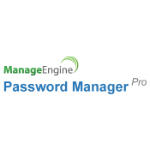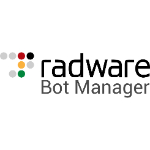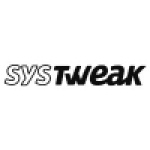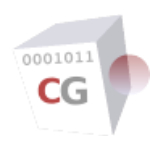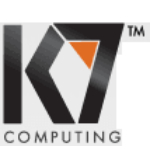TechnologyCounter provides genuine, unbiased real user reviews to help buyers make informed decisions. We may earn a referral fee when you purchase through our links, at no extra cost to you.
List of 15 Best Security Management Software
Showing 1 - 15 of 143 productsAppTrana is a cybersecurity software that offers robust protection for websites, web applications, and APIs. With its advanced features and unparalleled functionality, AppTrana is dedicated to safeguarding your digital assets from online threats and...Read AppTrana Reviews
BitDefender is a leading cybersecurity company that has been providing top-notch protection against various online threats for over two decades. With its advanced and innovative solutions, BitDefender has become a trusted name in the industry, keepin...Read BitDefender Reviews
Authguru is a solution for all your authentication needs. Say goodbye to password hassles and hello to a seamless and secure login experience. With its advanced features and user-friendly interface, Authguru is the top choice for businesses and indiv...Read Authguru Reviews
Axxon Next a powerful and innovative software designed for advanced video surveillance. With its user-friendly interface features, Axxon Next provides efficient solutions for managing security systems. Whether for home or business, Axxon Next is a ch...Read Axxon Next Reviews
ManageEngine Password Manager Pro is an enterprise password management solution that centralizes password vaulting, privileged account management, and session control in one console. It encrypts and consolidates passwords in a secure vault, reinforce...Read ManageEngine Password Manager Pro Reviews
CrowdStrike Falcon is a solution for modern-day cybersecurity threats. With its advanced technology and unmatched capabilities, Falcon is changing the game for businesses looking to protect their valuable data from malicious attacks. Say goodbye to t...Read CrowdStrike Falcon Reviews
Radware Bot Manager an innovative software designed to protect your website from malicious bot attacks. With advanced features and intelligent detection techniques, Bot Manager ensures the security and reliability of your online platform. Say goodbye...Read Radware Bot Manager Reviews
Systweak Antivirus is a leading software that provides continuous protection against malware and viruses. With its real-time protection and regular updates, it ensures the safety of your data by detecting and removing harmful viruses and malware tha...Read Systweak Antivirus Reviews
Cryotos CMMS is a top-of-the-line software designed to streamline maintenance operations for businesses of all sizes. With its user-friendly interface features, Cryotos CMMS is revolutionizing the way companies manage their maintenance tasks. From tr...Read Cryotos CMMS Reviews
ExpressVPN is a trusted name in the world of online privacy and security. With its advanced technology and strong encryption, ExpressVPN offers seamless protection for users internet activities. From browsing to streaming, ExpressVPN ensures a secure...Read ExpressVPN Reviews
CacheGuard-OS is a software designed to provide top-notch security and optimization for your network and web applications. It is a highly versatile solution that ensures the smooth functioning and protection of your online assets. With its advanced f...Read CacheGuard-OS Reviews
Kaspersky is a trusted name in the world of cybersecurity. With its advanced technology and years of experience, Kaspersky provides top-notch protection against all types of online threats. Count on Kaspersky to keep your digital life safe and secure...Read Kaspersky Reviews
K7 Antivirus is a solution for all your cybersecurity needs. With its advanced features protection, K7 Antivirus ensures your digital world is safe and secure from the evolving threats of today. Trust K7 to keep your devices and sensitive data safegu...Read K7 Antivirus Reviews
NordVPN, the leading virtual private network provider that ensures your online privacy and security. With advanced encryption and global server coverage, NordVPN allows you to browse the web anonymously while protecting your sensitive information fro...Read NordVPN Reviews
NoBrokerHood is a platform that brings convenience, security, and community living together. Say goodbye to the hassles of traditional housing societies with NoBrokerHoods seamless technology that simplifies managing daily tasks, ensures safety, and...Read NoBrokerHood Reviews
- What Is Security Management Software?
- Top Reasons Why Businesses Need Security Management Software?
- What Are the Top Key Features of Security Management Software?
- What Are the Top Benefits of Security Management Software?
- What Are the Steps to Choose the Right Security Management Software?
- What Are the Types of Security Management Software for Different Industries?
- What Are the Technology Trends for Best Security Management Software?
- What Are the Deployment Options for Security Management Software?
What Is Security Management Software?
Security management software is a software application that enables enterprises to enhance the safety and security of their operations. The utilization of this technology facilitates the effective administration of diverse security measures, including login authentication, access control, vulnerability assessment, and encryption.
The security management platform offers an enhanced level of protection and facilitates continuous monitoring of all facets of a company's security activities. One of the key benefits associated with security information management software is its ability to facilitate the centralized control of an organization's security policies.
This program is designed to ensure the effective implementation and monitoring of the security policies and procedures inside a specific firm. Furthermore, this technology enables organizations to promptly evaluate potential security breaches, facilitating the implementation of corrective actions and timely responses to emerging risks.
In addition to its primary function, the security management software offers enterprises a comprehensive suite of reporting capabilities. This practice aids in the effective monitoring and management of all facets of a company's security operations.
Furthermore, it has the capability to furnish firms with instantaneous notifications whenever there is the identification of potentially illicit behavior. This capability facilitates prompt response by organizations to potential security risks and breaches, thereby safeguarding their data and resources.
In general, online security software plays a crucial role in enhancing organizational safeguards against potential risks. The use of this system facilitates enhanced surveillance and regulation of several security dimensions, thereby contributing to the preservation of the organization's financial and personal data integrity.
Top Reasons Why Businesses Need Security Management Software?
1. Improved Accountability: Security management software enables firms to enhance their ability to monitor, track, and report on the actions undertaken by their personnel, hence promoting increased levels of accountability.
2. Enhanced Data Security: The utilization of online security software inside a company can effectively safeguard sensitive data and mitigate the potential risks associated with data breaches.
3. Threat Detection: The utilization of security management platform enables the real-time identification of potential risks to data and systems, so contributing to the mitigation of downtime and interruption.
4. Regulatory Compliance: The utilization of security information management system facilitates the attainment and sustenance of regulatory and standard compliance within businesses.
5. Improved Incident Response: Security management software is capable of offering an effective incident response system, thereby ensuring prompt identification and resolution of threats and vulnerabilities.
6. Easy Accessibility: The accessibility of online security software across many devices facilitates convenient remote monitoring and management of security operations.
7. Advanced Threat Intelligence: Security information management system has the capability to offer comprehensive understanding of the various types of security threats encountered by organizations and the most effective strategies for safeguarding against them.
8. Automated Alerts: Security information management software has the capability to be configured in such a way that it is able to transmit notifications to administrators, thereby providing them with information regarding any potentially suspicious activities or threats that may pose a risk to their respective businesses.
9. Security Auditing: Security management platform can provide detailed reports on the status of an organization’s security systems, allowing administrators to easily monitor for any problems.
10. Security Awareness Training: An online security software has the capability to offer personnel training on security best practices and current trends.
11. Risk Analysis: Security information management system plays a crucial role in the identification and evaluation of potential security issues, enabling firms to effectively allocate their resources based on priority.
12. Security Policy Management: Security management software is a valuable tool that facilitates the efficient creation and maintenance of security rules, while also ensuring their effective application.
13. Real-Time Monitoring: Security information management software enables administrators to have real-time visibility into their networks, facilitating prompt identification and resolution of security concerns.
14. Comprehensive Protection: Security management software offers enterprises a comprehensive safeguard against potential security risks, vulnerabilities, and attacks.
15. Cost Savings: The utilization of online security software has the potential to mitigate the expenses associated with manual security management, hence enabling an organization to achieve savings in terms of both time and financial resources.
What Are the Top Key Features of Security Management Software?
1. Authentication: The utilization of a robust identity verification protocol aimed at validating the authenticity of users' claimed identities.
2. Authorization: The process of restricting access to safeguarded resources based on a user's predetermined security level.
3. Access Control: This functionality facilitates the administration of user access to networks, systems, and applications.
4. Audit Trails: The implementation of a comprehensive monitoring system to track all user actions throughout the systems and networks.
5. Vulnerability Scanning: This functionality aids in the identification of potential security vulnerabilities within applications and systems.
6. Intrusion Detection: The implementation of an automated system or device monitoring mechanism is employed to identify and mitigate any potentially harmful or malicious activities.
7. Encryption & Decryption: The implementation of a procedure that effectively safeguards confidential data to mitigate illegal access by those lacking proper authorization.
8. Identity and Access Management: Access management is a procedural framework that governs the allocation and control of privileges to individuals for the purpose of utilizing various systems and applications.
9. Asset Management: The implementation of a comprehensive system for the monitoring and management of hardware, software, and other associated assets.
10. Reporting & Alerts: The implementation of automated reporting systems enables the detection and documentation of any potentially illicit behavior, while also facilitating the issuance of timely notifications on such activities.
What Are the Top Benefits of Security Management Software?
1. Increased visibility and awareness: The utilization of online security software enables the consolidation of control over enterprise networks, facilitating the provision of up-to-date visibility and understanding of intricate security setups that would otherwise pose challenges to attain.
2. Automation and optimization: Security management software streamlines manual processes and duties, resulting in expedited processing times and optimized allocation of resources and staff.
3. Improved compliance: Security information management software assists in the maintenance of an organization's compliance obligations by addressing a range of pertinent legislation.
4. More efficient threat detection and response: The utilization of security management software facilitates a holistic perspective of the network ecosystem, hence enhancing the efficacy of detecting possible threats and expediting the process of responding to such threats.
5. Enhanced incident and risk management: The utilization of security information management system facilitates a more profound examination of incidents and hazards, hence empowering businesses to anticipate potential future issues and enhance their security strategy through informed decision-making.
6. Improved efficiency and costs: The use of security management software facilitates the optimization of operations, diminishes system intricacy, and enhances security posture, hence resulting in a more economically efficient security framework.
What Are the Steps to Choose the Right Security Management Software?
1. Evaluate your security requirements: Please identify the security objectives and goals that your organization must accomplish. The task at hand involves identifying the applicable legislation or standards that pertain to the firm, as well as the necessary security technologies and processes that must be implemented in order to ensure compliance.
2. Research available software solutions: Please compile a comprehensive inventory of the essential features required in a security management solution, along with any other specific features that may be necessary.
Conduct a comprehensive investigation of the existing software solutions in order to ascertain their compatibility with your specific requirements and ascertain whether they include the necessary features that align with your needs.
3. Assess ease of use: Evaluate the user experience of the program and ascertain its level of ease in terms of setup and usability. It is advisable to consider implementing a trial period with the program prior to making a purchase commitment.
4. Evaluate cost and value: Examine the financial investment required for the adoption and utilization of the program in relation to the value it brings to your firm. This analysis aims to evaluate the cost-effectiveness of deploying security management software by comparing the incurred expenses with the associated benefits.
5. Talk to a software vendor: Contact the software provider to get assistance in evaluating the functionalities and capabilities of their program. Could you please provide information regarding the setup process of the software?
Additionally, I am interested in learning about the support services that are offered. Lastly, I would like to inquire about any other features that the software may have.
6. Select the right software: After careful consideration of the aforementioned aspects, it is advisable to choose the security management software that most effectively aligns with your requirements. It is imperative to thoroughly examine the licensing agreement and comprehend the terms and conditions associated with your acquisition.
What Are the Types of Security Management Software for Different Industries?
1. For Healthcare: Healthcare security management software is a valuable tool that may effectively safeguard patient records and medical data, while simultaneously granting authorized workers appropriate access.
This particular software has the capability to offer data encryption/decryption, user authentication, access control, event logging, and security monitoring.
2. For Education: The purpose of educational security management software is to enhance the protection of data within campus networks and ensure the safety of student and faculty records. This is achieved by the implementation of access control mechanisms, authentication protocols, event logging systems, and identity management functionalities.
3. For Financial Services: Financial service security information management software plays a crucial role in safeguarding consumer data, ensuring the security of transactions, and detecting instances of fraudulent activity. The aforementioned software has the capability to offer user authentication, access control, event logging, auditing, and security against unwanted access.
4. For Manufacturing and Industrial: The utilization of security management software in the industrial and manufacturing sectors serves to safeguard industrial processes, machinery, intellectual property, and supply chain data against unwanted access.
This particular software has the capability to offer user authentication, access control, event recording, and data encryption/decryption.
What Are the Technology Trends for Best Security Management Software?
The prevailing technological advancements in the realm of security management software encompass the subsequent elements:
1. Identity and Access Management: Identity and access management (IAM) is a critical security management framework that facilitates the administration of user privileges and regulates access inside an organization's digital infrastructure and networks.
Identity and Access Management (IAM) solutions can enhance an organization's ability to effectively monitor and regulate access to company data, thereby ensuring that only authorized individuals are granted access.
2. Cloud Security: The significance of cloud security is growing in tandem with the increasing number of enterprises transitioning their operations to cloud-based platforms.
Cloud security solutions facilitate the implementation of measures that guarantee the protection and integrity of data stored in cloud environments, hence enabling enterprises to establish a reliable and secure means of accessing such data. These proposed measures can effectively safeguard data, uphold data privacy, and adhere to governmental standards.
3. Authentication: Authentication plays a key role in the realm of security management. The purpose of its utilization is to authenticate the identity of a user and mitigate the risk of unlawful entry. Organizations have the ability to employ authentication systems in order to verify the identity of users across various levels and platforms.
These technologies facilitate the management of access to sensitive information within enterprises and serve as a preventive measure against harmful attacks.
4. Network Security: The preservation of network security is an essential component of security management. Network security solutions can be employed by organizations to safeguard their networks from harmful intrusions.
These proposed solutions have the potential to effectively administer network access, mitigate illegal access, and detect potential security breaches.
5. Vulnerability Management: Vulnerability management is a critical component of security management. The process aids businesses in the identification of potential threats and weaknesses within their networks. Vulnerability management systems can be employed by organizations to facilitate the identification and mitigation of security threats.
What Are the Deployment Options for Security Management Software?
The available deployment choices for security management software are contingent upon the specific software package used, typically classified into three primary groups.
1. On-Premises: This alternative entails the implementation of the software within a corporate data center or another specifically designated setting. The allocation of system resources is specifically designated for the software, hence facilitating the attainment of optimal performance and stability.
2. Cloud-Based: This entails employing a cloud-based infrastructure to facilitate the deployment of the security management platform. Resources are distributed across several users and assigned to individual users based on their specific requirements.
3. Hybrid: This alternative amalgamates the advantages inherent in both on-premises and cloud-based implementations. This feature offers users the opportunity to select the most appropriate setting for their own requirements, so enabling them to benefit from the advantages of both options.




